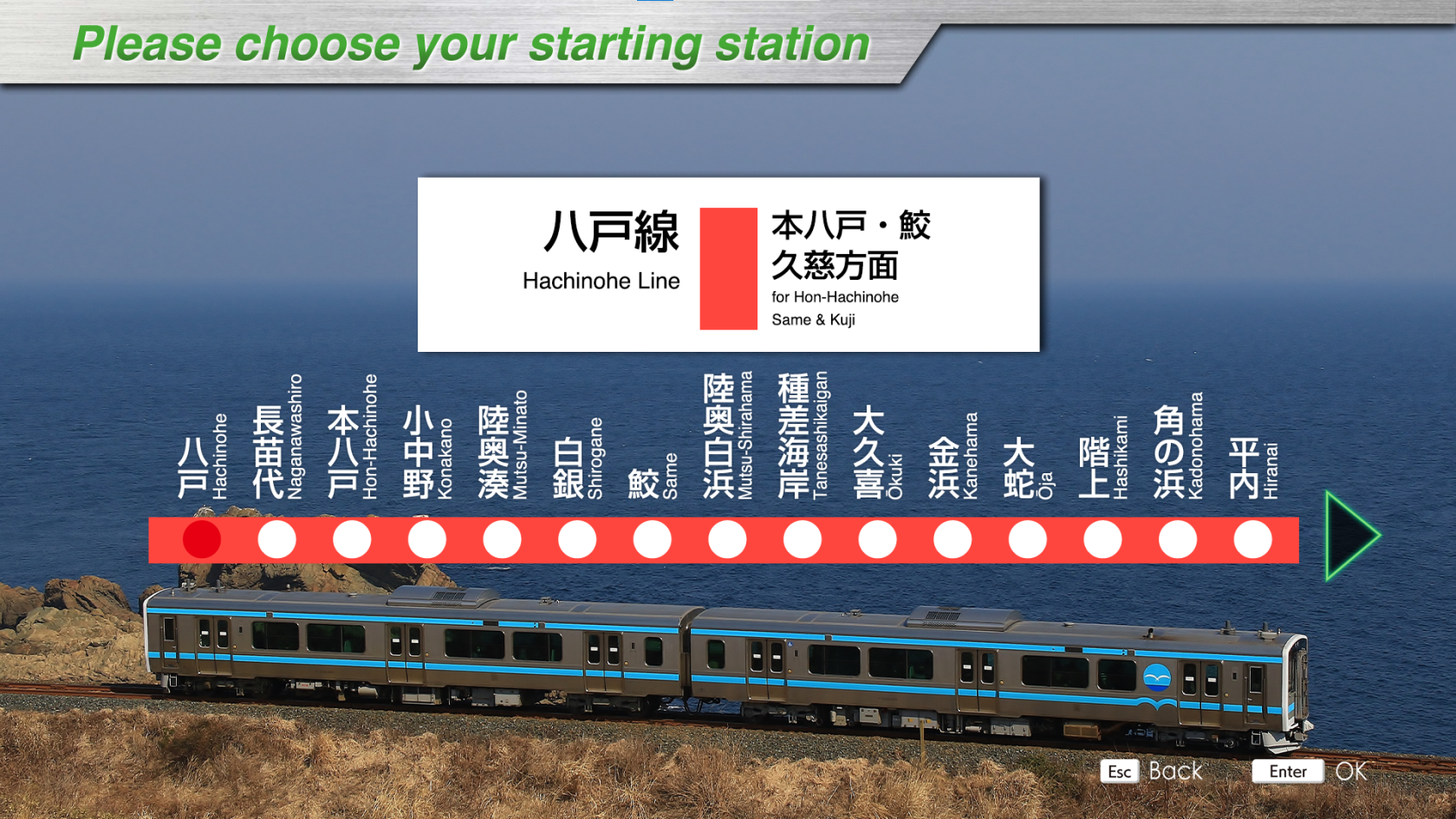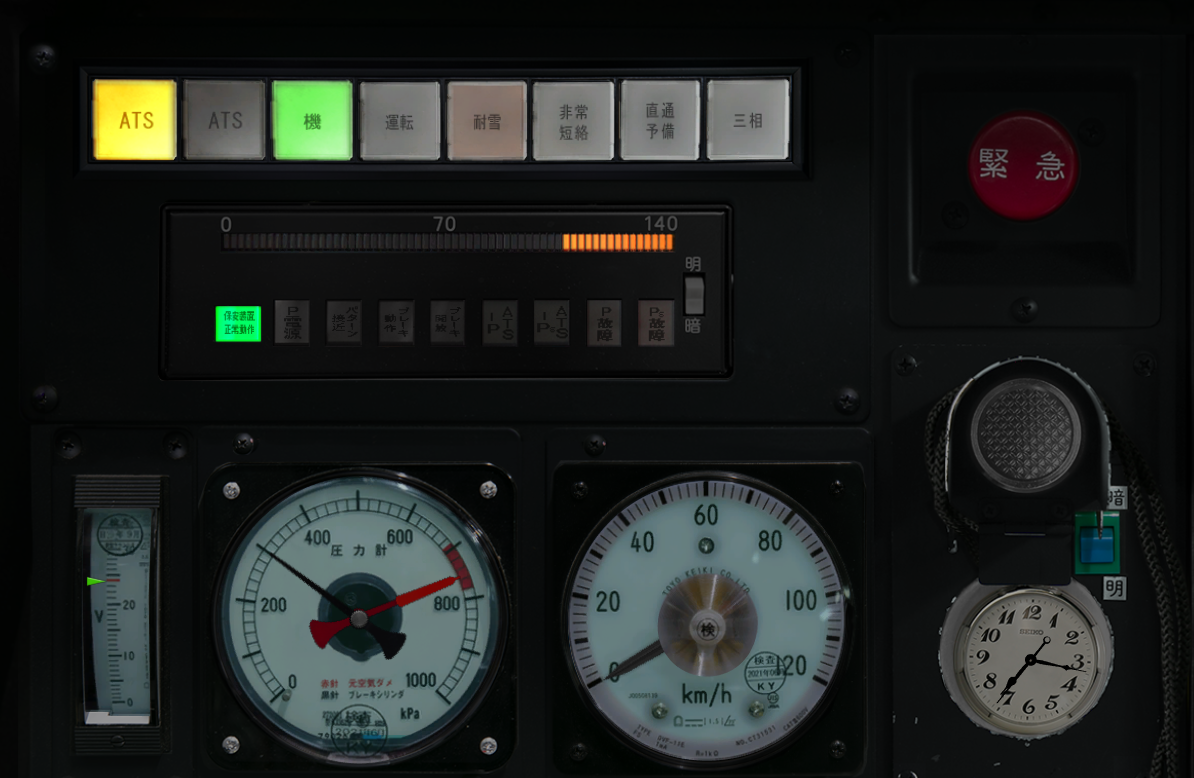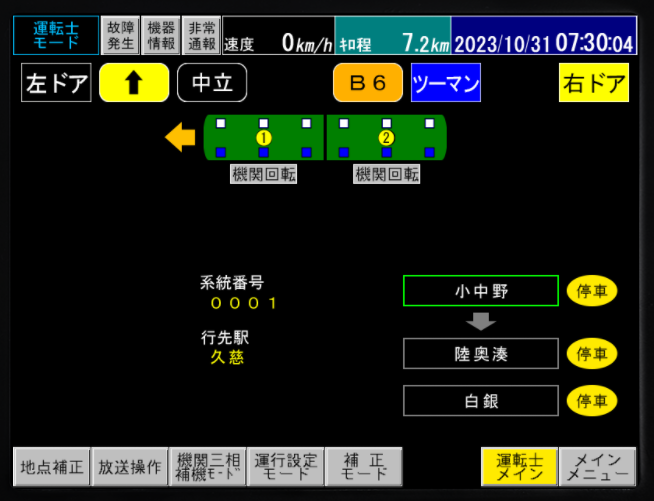Hachinohe Line
Introducing
The Hachinohe Line connects Hachinohe Station in Hachinohe City, Aomori Prefecture with Kuji Station in Kuji City, Iwate Prefecture.
The line was first opened in 1894 between Shiriuchi Station (now Hachinohe Station) and Hachinohe Station (now Hon'hachinohe Station), and was repeatedly extended and opened to service until 1930, when the line was extended to Kuji Station, bringing the Hachinohe Line into full service.
With the opening of the Tohoku Shinkansen bullet train line extension between Hachinohe and Shin-Aomori stations in December 2010, the line between Hachinohe and Aomori stations, which had previously been on the Tohoku Main Line, was transferred to Aomori Railway, and is now a line with no connections to other JR conventional lines.
In October 2013, "TOHOKU EMOTION," a sightseeing train with a restaurant space throughout the train, began operation between Hachinohe and Kuji Stations, mainly on Saturdays and holidays.
The train line is divided into two separate lines: one between Hachinohe Station and Same Station for urban transportation, and the other between Hachinohe and Kuji Station for interregional transportation.
The majority of the route runs along the coastline, including the Tanezaki Coast, a national scenic beauty spot and a breeding ground for petrels. From Hachinohe Station to Same Station, the line runs through factories and urban areas; from Same Station to Rikuchu-Nakano Station, it runs through rural areas and along the Pacific Ocean; and from Rikuchu-Nakano Station to Kuji Station, it runs through hilly areas. Some sections of the line offer views of the ocean, making it a popular route for passengers to see the ocean from the train windows.
Key data
- Line length: 64.9 km
- Number of stations: 24
- Safety system: ATS-Ps
- Train model: Kiha E130-500 (2 cars)
- Max speed: 85 km/h
- Max speed after signals:
- Reduced speed (green/yellow): 65 km/h
- Caution (yellow): 45 km/h
- Speed restriction (yellow/yellow): 25 km/h
- Routes:
- Hachinohe ~ Kuji (429D): "Local" - 24 stations - 64.9 km
- Hachinohe ~ Same (1431D): "Local" - 7 stations - 11.8 km
- Hachinohe ~ Kuji (441D): "Local" - 24 stations - 64.9 km
- Hachinohe ~ Same (1447D): "Local" - 7 stations - 11.8 km
- In-train announcements: Yes
- Driver announcement (pointing-and-calling):
NoYes
Features
As schedules are not available on the DICS screen, we recommend using the timetables or displaying the STA indicator.
On this line, train departure is only authorized when the buzzer sounds. The buzzer sounds when the conductor validates departure.
ConsoleStations detaillist
| Station |
Japanese |
Distance ( |
JRETS |
|---|---|---|---|
| Hachinohe | 八戸 | 0 | |
| Naganawashiro | 長苗代 | 3,4 | |
| Hon-Hachinohe | 本八戸 | 5,5 | |
| Konakano | 小中野 | 7,3 | |
| Mutsu-Minato | 陸奥湊 | 9,0 | |
| Shirogane | 白銀 | 10,3 | |
| Same | 鮫 | 11,8 | |
| Mutsu-Shirahama | 陸奥白浜 | 17,5 | |
| Tanesashi-Kaigan | 種差海岸 | 19,6 | |
| Ōkuki | 大久喜 | 21,8 | |
| Kanehama | 金浜 | 24,8 | |
| Ōja | 大蛇 | 25,8 | |
| Hashikami | 階上 | 27,5 | |
| Kadonohama | 角の浜 | 29,5 | |
| Hiranai | 平内 | 32,1 | |
| Taneichi | 種市 | 34,1 | |
| Tamagawa | 玉川 | 38,1 | |
| Shukunohe | 宿戸 | 40,0 | |
| Rikuchū-Yagi | 陸中八木 | 43,1 | |
| Uge | 有家 | 45,8 | |
| Rikuchū-Nakano | 陸中 |
48,4 | |
| Samuraihama | 侍浜 | 54,4 | |
| Rikuchū-Natsui | 陸中夏井 | 61,7 | |
| Kuji | 久慈 |
64,9 |
Movie
Useful links
Wikipedia: https://en.wikipedia.org/wiki/Hachinohe_Line
Driver's Guide:Guide and timetables: https://docs.google.com/spreadsheets/d/1H7R4lfMNA8EnuSvzVVlOHqA-_LYPZ6TjGbp_C1YqVuQ/edit#gid=261872662
Timetables (in japanese):
Hachinohe ~ Kuji (429D) :https://docs.google.com/spreadsheets/d/1H7R4lfMNA8EnuSvzVVlOHqA-_LYPZ6TjGbp_C1YqVuQ/edit#gid=1421452860Hachinohe ~ Same (1431D) :https://docs.google.com/spreadsheets/d/1H7R4lfMNA8EnuSvzVVlOHqA-_LYPZ6TjGbp_C1YqVuQ/edit#gid=770400459Hachinohe ~ Kuji (441D) :https://docs.google.com/spreadsheets/d/1H7R4lfMNA8EnuSvzVVlOHqA-_LYPZ6TjGbp_C1YqVuQ/edit#gid=1330843814Hachinohe ~ Same (1447D) :https://docs.google.com/spreadsheets/d/1H7R4lfMNA8EnuSvzVVlOHqA-_LYPZ6TjGbp_C1YqVuQ/edit#gid=1542655935



